An alternative to the 6M7JHV antenna for 6m / 50MHz
Stacking
Before jumping into the design of the mast mounting bracket, it might be worth talking about the stub mast when a pair of these antennas are stacked. Paul and I are using new 6 metre scaffolding poles that is 1 29/32" in outside diameter and has a 5mm thick wall. To give it more strength, I inserted a 2.5 metre and Paul inserted a 5 metre length of 1 1/2" 10swg inside of it. Of course, there is no need to do this if you only have a one metre stub mast!
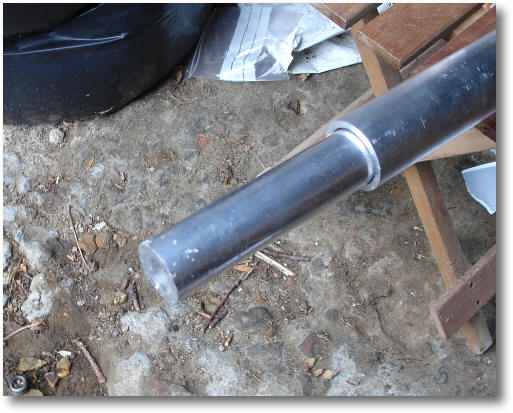
Strengthening the stub mast when stacking
This is what can happen to your 6M7JHV stack in a high wind!
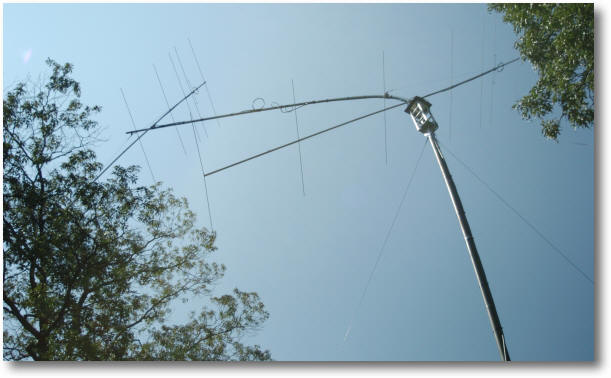
N3DB's 6M7JHV stack after a high wind
Here are the two LFA2s being set up on the ground.
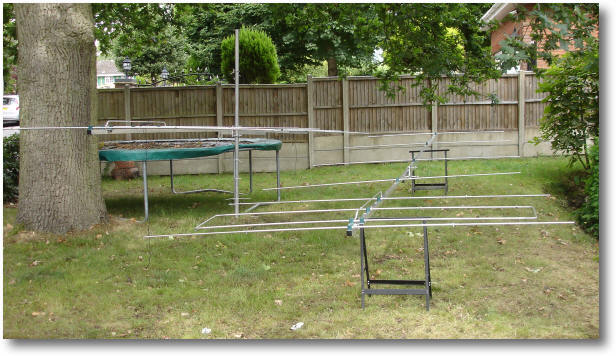
The two LFAs up on the mast for the first time for testing. Each one is fed by a separate coax cable for testing.
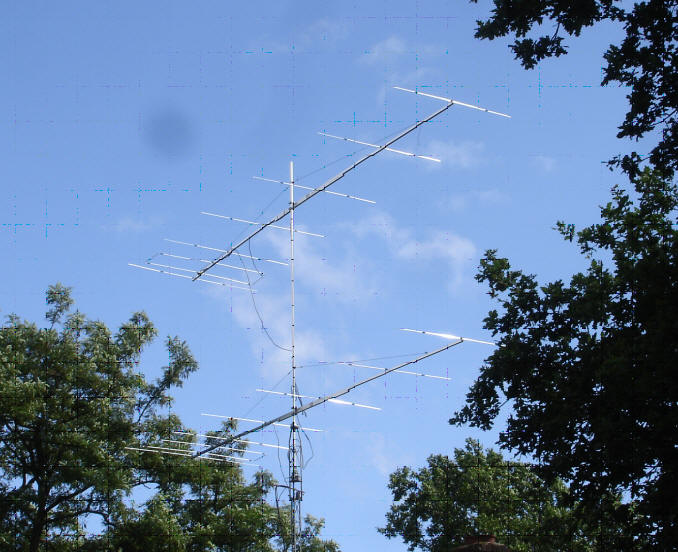
Both LFAs on the stub mast for the first time
The 6M7JHV's SWR can be seen in Red and the alternative 6M7JHV LFA2 in orange.
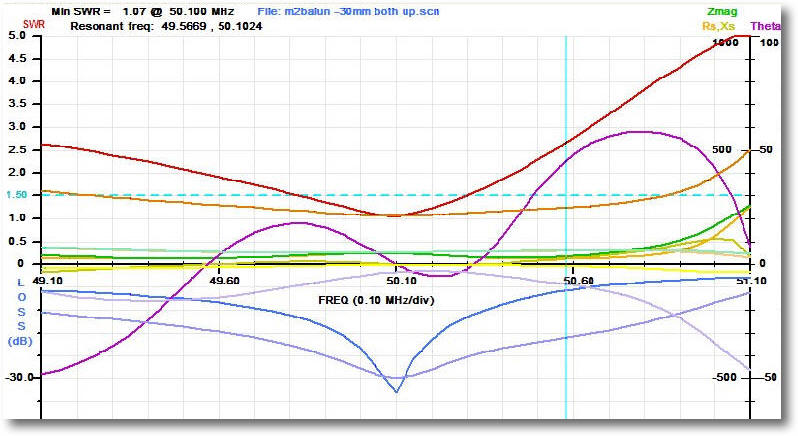
The stack now completed and working
I'm sure Justin will say that this can be bettered with a bit more effort but I have to say that I'm happy for now! All I need now is some DX to work! How wrong could be...
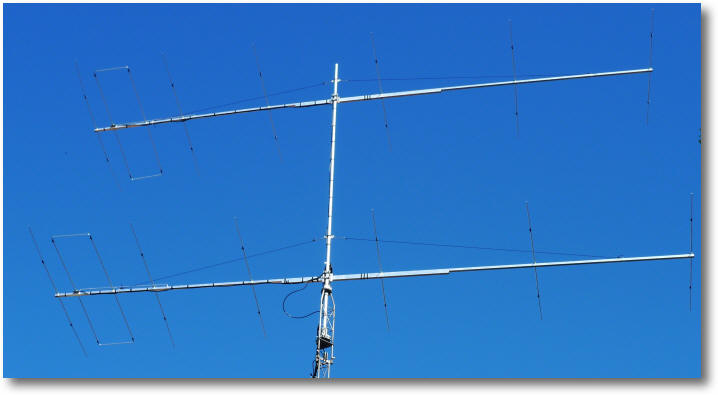
The final LFA2 stack at G3WOS
My mega cock up
I'd been using the stack for a week and I was just not happy with the results. I had a feeling that they were not working in the way I would have expected. In particular, I was hearing Lance, W7GJ and Mick, W1JJ strongly on my 30 degree 3rd lobe and 20 degree 2nd lobe but VERY LITTLE on my 6 degree main lobe! Even Lance was surprised that I could hear him on my 3rd lobe.
So I decided to profile my vertical (elevation) by monitoring Lance when he was enthusiastically calling CQ for whole afternoon. In the end I up with came up with the following graph that confirmed my suspicions by plotting WSJT decode strengths against moon elevation while keeping the the stack aligned with the moon in azimuth.
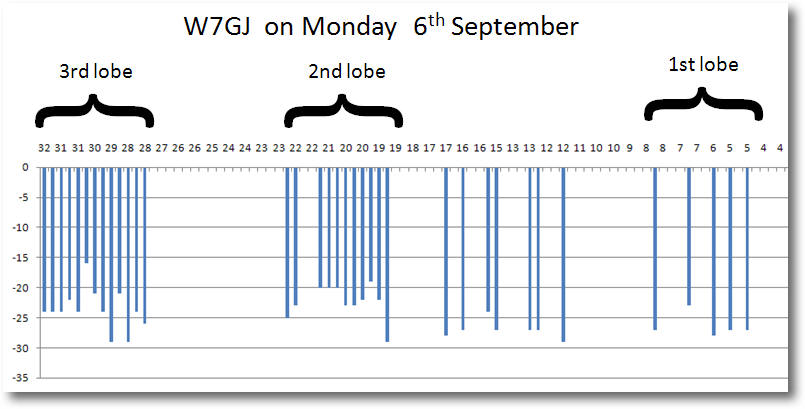
Monitoring W7GJ vi EME over a number of hours (horizontal axis = moon height)
I really could not understand why this should be. Then G4CCZ and G0KSC suggested that I might be feeding the stack out of phase instead of in-phase by accidentally getting connecting the coax to one of the antennas wrongly i.e. screen of the feed coax to the balun instead of the core. Well, I could hardly believe this as I was quite careful connecting everything together.
Justin, in his usual enthusiastic way, provided me with a computer analysis of what this error would look like which can be seen below. WOW, it exactly matched what I was experiencing in practice!
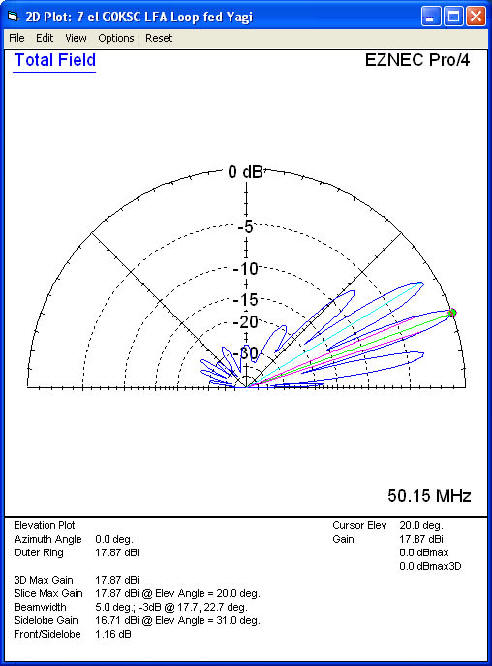
What the antenna lobes would look like if fed out-of-phase instead of in-phase
I lowered the tower and just knew that one of the antennas was incorrectly connected and YES the upper antenna was actually connected wrongly!
When I put the tower back up all the beacons were what they should be and I obtained the following plot which now has the typical LFA double dip in SWR. It was clear from this plot that I need to reduce the size of the loop by a few mm to bring resonance back to 50.110MHz and reduce the SWR between the two dips. I'll do this shortly.
The red plot shows the stacked JHVs and the blue, the LFA stack.
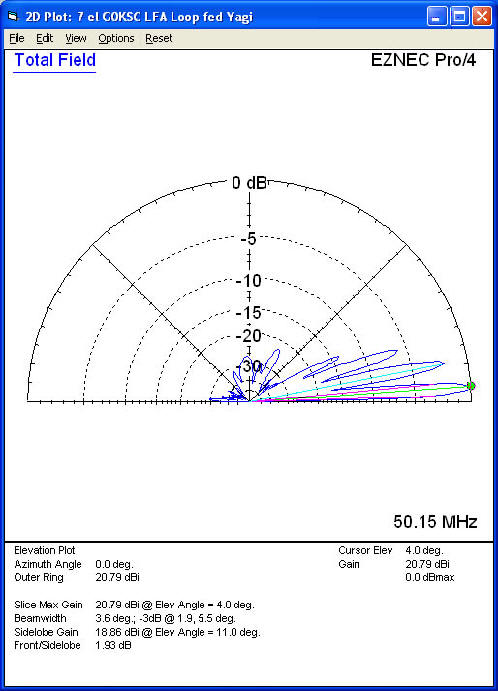
What the antenna lobes should be and are when fed in-phase!
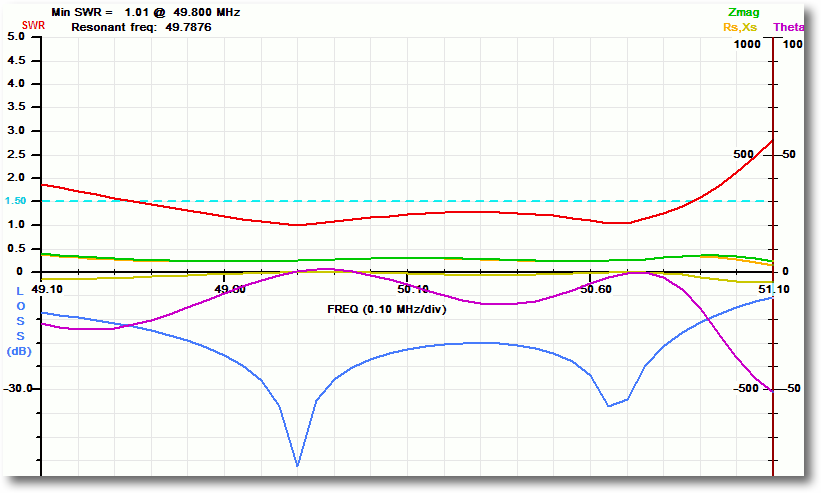
The performance of the stack after correcting the phase of the top antenna
This, quite obviously, was much better but not good enough for Justin. As mentioned above our antennas are under stacked for very practical reasons. Optimal stacking distance is around 6.5 metres which we believe is too much for a simple stub mast. At this spacing the performance of each antenna will be optimal and the highest additional gain will be achieved. However, real life and practicalities has meant that Paul and myself have under stacked the antennas at just under 5 metres and we will accept the lower stack gain this entails as it is still (just) above 2dB.
So now I can hear Lance W7GJ off the moon on my newly emerged major lobe down to 1 degree. It just shows how easily it is to make a mistake!
To see the tweaks we made to the antennas to get best performance look here.